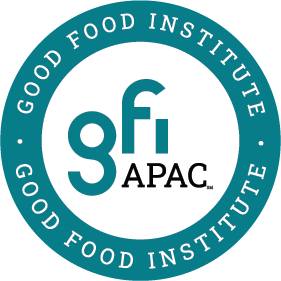Global alternative protein trends to watch

Alternative protein progress is advancing all around the globe
Alternative proteins are a solution that can work anywhere, and as part of our ongoing work for their advancement everywhere, we analyze the state of the alternative protein industry across global regions and the pillars of plant-based, fermentation-enabled, and cultivated meat, eggs, and dairy.
The data we captured and analyzed demonstrates the global nature of the alternative protein industry. Alternative protein progress is happening every day, in every corner of the world:
- There are specialized alternative protein companies in at least 65 different countries, according to our company database.
- An estimate of the total global retail sales of plant-based meat, seafood, milk, yogurt, ice cream, and cheese was $29 billion in 2023, according to Euromonitor data.
- There are 110 nationalities represented in the GFIdeas community for alternative protein innovators.
- There are Alt Protein Project student groups at more than 70 universities spanning 20 different countries.
- We estimate newly announced global public funding for alternative proteins amounted to $523 million in 2023, for an all-time investment total of $1.67 billion, according to our State of Global Policy Report.
Clear patterns emerging
Through the data, some clear patterns emerged to reveal trends that encapsulate the global nature of alternative proteins. We’ve gathered the top four for you.

Governments worldwide are investing in alternative proteins
- In the world’s most populous region, opportunities abound for alternative proteins. Public funding for alt proteins in the APAC region skyrocketed by 207% year-over-year between 2021 to 2022, reaching $94 million USD.
- Singapore is home to 24% of APAC alternative protein startups, and at least 25 international startups and corporates have established operations in Singapore to conduct research and business development in the alternative protein sector. This growth is bolstered by strong support from Singapore’s government: the city-nation was the first country in the world to approve the sale of cultivated meat and has supported the alternative protein industry through its “30 by 30” initiative to produce at least 30% of the country’s food supply domestically by 2030.
- Brazil has made progress on cultivated meat commercialization and regulation of alternative proteins. In 2023, cultivated meat companies Cellva and Sustineri Piscis hosted the country’s first cultivated meat tastings. And the Brazilian government has released drafts covering regulation and labeling of the three alternative protein pillars for public consultation.
- With a population of over 1.4 billion, of which more than half is below the age of 30, India is poised to play an important role in the global alternative protein industry. Smart protein (as alternative protein is commonly referred to in India, mirroring nomenclature for other innovative and sustainable sectors) was chosen as one of six thematic sectors under the high-performance biomanufacturing policy priorities by the Indian government in 2023.
- Several European governments are making bold efforts to fund alternative protein research and commercialization. In 2023, the government of Denmark published a 40-page roadmap to boost plant-based food production, following its $177 million USD investment to create a new Fund for Plant-Based Foods in 2021.
- In Europe, there are pockets of sales growth and impressive private and public investment in alternative proteins. Germany is by far the largest market for plant-based options in Europe, with sales of plant-based foods worth a total of €1.9 billion in 2022, up 11% from 2021 despite difficult market conditions. Germany also earmarked the equivalent of $41 million USD to support alternative protein farming, manufacturing, and research in 2024.
- In 2023, Israel announced $26 million USD in public funding towards alternative proteins, bringing its all-time total to $84 million—support that is critical for advancing alternative protein research, commercialization, and infrastructure construction.
- One of the world’s largest economies, the U.S., is also a clear private sector leader in alternative proteins. The U.S. has historically dominated in alternative protein private investments and the number of dedicated alternative protein companies. The U.S. was also the second country ever to approve cultivated meat; in 2023, diners were able to enjoy GOOD Meat’s cultivated chicken in Washington, DC, and UPSIDE Foods’ cultivated chicken in San Francisco, California.

The academic and research ecosystem is thriving
- The APAC region produced 400+ alt protein-focused research publications in just the past three years.
- The United Kingdom led 2023 cultivated meat funding announcements with an allocation of £12 million ($15 million) for a new research hub at the University of Bath followed by an estimated £3.4 million ($4.3 million) for seven research projects on cultivated meat.
- At least two dozen research institutions across India are involved in alternative protein research and training. GFI India engages with research institutions through the Smart Protein Innovation Hubs Initiative, which is focused on filling research gaps, supporting startups, and developing alternative protein course curricula.
- Israel has a thriving academic ecosystem, with over 70 active alternative protein researchers across 11 academic institutions, and two dedicated food tech research centers announced.
- The Alt Protein Project (APP) welcomed 24 new chapters (including expansions into countries where APP was not previously represented, such as Brazil, Japan, Malaysia, Portugal, Switzerland, and Turkey). Tufts University became the first in the United States to offer an undergraduate minor in cellular agriculture.

Agricultural innovations are helping to reimagine how meat is made
- Brazil is home to some of the most extensive biodiversity on earth. GFI Brazil is working to sustainably harness its abundant native species for alternative proteins with the Biomes Program. The program, which was funded by the Climate and Land Use Alliance Foundation and the JBS Fund for the Amazon, involved a call for research proposals focused on native Brazilian plants with potential alternative protein applications. The team received 103 research proposals, evidence of the vast natural toolkit that can be harnessed to produce alternative proteins. The ten plant species selected have the potential to improve alternative protein products while creating local jobs and lowering the cost of products in Brazil. Examples include:
- Baru almonds can yield several ingredients of value for alternative proteins including protein hydrolyzate, hydrolyzed fiber, and a natural, antioxidant-rich red food dye.
- Macaúba can produce 8 different ingredients including fatty acids, natural pigments, polysaccharides, and fibers, as well as a protein ingredient with the full spectrum of amino acids.
- Babassu almonds can be used to produce a fiber-rich ingredient with a high water retention capacity.
- A new report written by Green Alliance and commissioned by GFI found that a shift towards plant-based, cultivated, and fermentation-made food could enable 21% of farmland across 10 European countries to be used to expand regenerative agriculture, restore nature, and boost domestic food production.
- At the end of 2023, Germany announced €20 million to help farmers produce crops for plant-based and fermentation-based alternative proteins. Meat consumption is falling to record lows in the country, with more Germans adapting their diets to a changing climate. This program makes it easier for agricultural producers to take part in a growing market for plant-based foods.
- India boasts strong agricultural productivity. It’s the world’s largest pulse producer and a leading global supplier of soybeans, chickpeas, peas, mung beans, and millet–all crops that can be used for alternative proteins. GFI India is working to develop an alternative protein value chain for indigenous crops through the Indigenous Agriculture Initiative.

Consumers are demonstrating their interest in alternative proteins and companies are leaning in
- In a 2023 survey of six Southeast Asian markets, accounting for a population of over half a billion people, 82% of respondents indicated they want to try plant-based meat or eat more of it.
- The APAC region has 200+ alternative protein-focused startups. Between 2022 and Q2 2023, more than 150 new plant-based meat products were launched in Southeast Asia, according to GFI analysis of Mintel’s Global New Product Database.
- A new survey found that European consumers want the freedom to choose cultivated meat. One of the largest surveys of its kind, conducted by YouGov and commissioned by GFI Europe interviewed more than 16,000 consumers across 15 European countries. It found that 69% of respondents in Portugal, 58% in Spain, 65% in Germany, and 57% in Belgium are in favor of cultivated meat being approved for sale if food regulators find it to be safe and nutritious.
- At least 113 dedicated startups are advancing alternative proteins across India, and at least 100 diversified companies, including popular Indian dairy brand Epigamia and multinational companies Nestlé and Hershey’s, with involvement in India’s alternative protein market.
- Israel is home to over 75 alternative protein startups, breaking records in 2023 with 15 new startups founded and six new production facilities launched.
- We estimate that there are over 380 dedicated alternative protein companies or brands in the U.S. In 2023, U.S. alternative protein companies raised $555 million. Furthermore, the U.S. market has seen numerous industry partnerships that help pool knowledge, infrastructure, and solutions in ways that champion innovation and advance the entire sector.
Onward and upward
The alternative protein industry is growing and evolving all over the world. While countries and regions are in varying stages of alternative protein market development, the breadth of progress across the globe shows that alternative proteins are far more than a short-term trend.
They’re a key solution to climate change, biodiversity, and food security issues. They’re helping us build a more regenerative food system. And governments, entrepreneurs, investors, food manufacturers, students, scientists, and most importantly, consumers, from all over the world are part of the action in propelling the alternative protein industry onward and upward.
Dig deeper with insights from around the world

APAC is growing a robust public, private, and scientific ecosystem for alternative proteins. Dive deeper into the 2023 APAC State of the Industry Report.

GFI Brazil is working to harness biodiversity for alternative proteins in ways that are regenerative, sustainable, and have the potential to create jobs while lowering costs and improving products. Read more about the Biomes Program.

Check out GFI Europe’s State of the Industry: Germany report for more on the German alternative protein landscape.

With a vibrant diversity of cultural traditions and eating habits, India is primed for game-changing alternative protein innovations. Learn more in GFI India’s State of the Industry Report.

Working around the globe
We work collaboratively across the globe to advance alternative protein progress through open-access research and resources, like our annual State of the Industry Reports. These reports—and all of our work—are made possible by our generous donors. This field still has miles to go to reach its full potential, but thanks to our global family of donors, we’re in this for the long haul, knowing we can solve this together.


